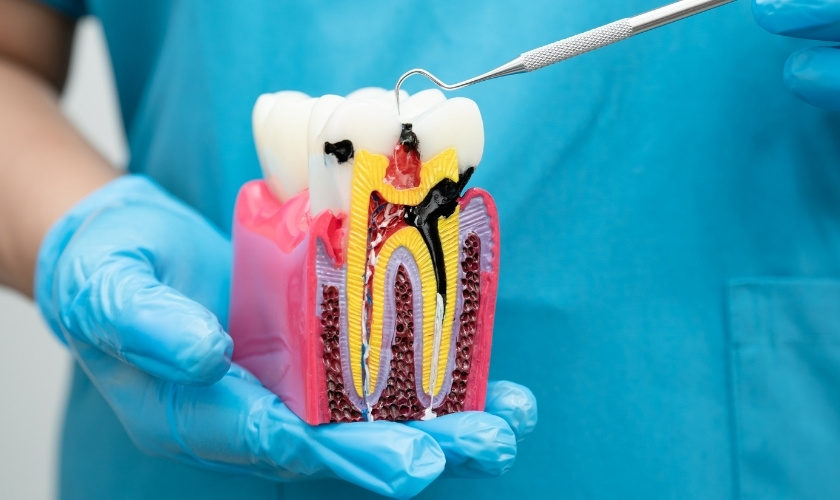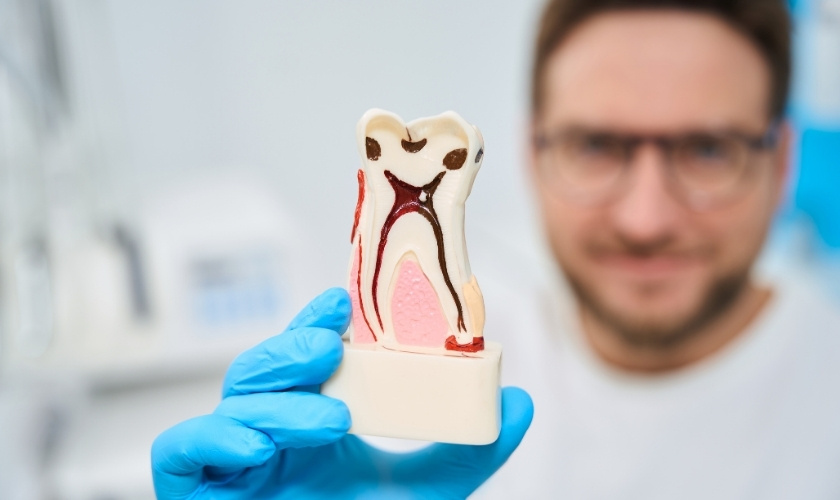
Root canal treatment often stirs anxiety in patients due to the fear of pain. However, understanding what to expect and how pain is managed can alleviate much of this fear. This guide will walk you through the process, addressing common concerns and providing tips for a smoother experience.
Why You Might Need a Root Canal
A root canal treatment becomes necessary when the pulp, the innermost part of the tooth containing nerves and blood vessels, gets infected or damaged. Deep decay, repeated dental procedures, or a crack in the tooth often cause this issue. If left untreated, the infection can spread, leading to severe pain and more complicated dental problems.
The dentist removes the infected pulp, cleans the canal, and seals it to save the tooth. This prevents further infection and restores the tooth’s function.
The Root Canal Procedure
Think of a root canal as a rescue mission for your tooth. The purpose of this treatment is to save a tooth that’s suffering from an inflamed or infected pulp, the innermost layer containing nerves and blood vessels. The infected pulp is removed, preventing the spread of infection and saving the tooth itself. The canals within the root are then meticulously cleaned and sealed. Often, a crown is placed on the tooth for added strength and protection. Here’s the detailed procedure of root canal treatment:
1. Examination and X-Rays
The dentist starts with an examination and takes X-rays to assess the damage. This helps plan the treatment accurately.
2. Local Anesthesia
To ensure comfort, the dentist administers local anesthesia to numb the affected area. This process is similar to the numbing procedure used for filling cavities.
3. Accessing the Pulp
The dentist makes a small opening in the crown of the tooth to access the pulp chamber. They then carefully remove the infected or damaged pulp.
4. Cleaning and Shaping
Using specialized instruments, the dentist cleans and shapes the canals. This step ensures all infected material is removed.
5. Sealing the Canal
The dentist seals the cleaned canals with a biocompatible material, usually gutta-percha. This prevents future infections.
6. Restoring the Tooth
Finally, the dentist restores the tooth with a filling or crown to protect and restore its function. This also improves the tooth’s appearance.
Pain Management During and After the Procedure
Modern techniques and anesthesia mean that root canal treatment is not as painful as many believe. Here’s how pain is managed:
1. During the Procedure
Local anesthesia ensures you feel little to no pain during the procedure. You might feel slight pressure or movement, but it should not be painful. Dentists are trained to administer anesthesia effectively, minimizing discomfort.
2. After the Procedure
Post-procedure pain is usually mild. Over-the-counter pain relievers like ibuprofen or acetaminophen can manage it. The treated area may feel tender for a few days, especially if there was pre-existing infection or inflammation. Your dentist might also prescribe antibiotics to prevent or treat infection.
3. Follow-Up Care
Following your dentist’s aftercare instructions is vital. Avoid chewing on the treated tooth until it is fully restored with a crown, maintain good oral hygiene, and attend follow-up appointments.
Common Concerns and Misconceptions
Many patients have concerns about root canal treatment, often fueled by misconceptions. Let’s address some of these:
1. “Root Canals Are Extremely Painful”
With advances in dental technology and anesthesia, root canals are no more painful than getting a filling. The procedure is designed to relieve pain caused by the infection, not cause it.
2. “It’s Better to Pull the Tooth”
Natural teeth allow you to eat a variety of foods and maintain the structure of your jaw and face. Root canal treatment preserves your tooth.
What to Expect During Recovery
Recovery from root canal treatment is typically quick and uneventful. Here’s what you can expect:
1. Mild Discomfort
You may experience mild discomfort or sensitivity in the treated area for a few days. This is normal and should subside with over-the-counter pain medication.
2. Soft Diet
Avoid chewing on the treated tooth until it is fully restored to prevent any damage.
3. Good Oral Hygiene
Continue to brush and floss regularly. Keeping your mouth clean helps in healing and prevents further issues.
4. Follow-Up Visits
Attend any scheduled follow-up visits to ensure the treatment was successful and the tooth is healing well.
Long-Term Care for Treated Teeth
Taking care of your teeth after a root canal is essential for long-term success. Here are some tips:
1. Regular Check-Ups
Visit your dentist regularly for check-ups and cleanings. This helps in early detection of any potential problems.
2. Avoid Hard Foods
Be cautious with hard or sticky foods that could damage the restored tooth or crown.
3. Maintain Oral Hygiene
Brush twice a day and floss daily. Proper oral hygiene prevents decay and gum disease, which can affect treated teeth.
4. Address Issues Promptly
If you notice any unusual pain or swelling, contact your dentist immediately. Early intervention can prevent complications.
Root canal treatment can save your tooth and alleviate the pain caused by infection. With modern dental practices, the procedure is relatively painless and recovery is straightforward. If you’re considering root canal treatment in Fort Worth, ensure you choose a dentist with experience and a good track record for the best results.




